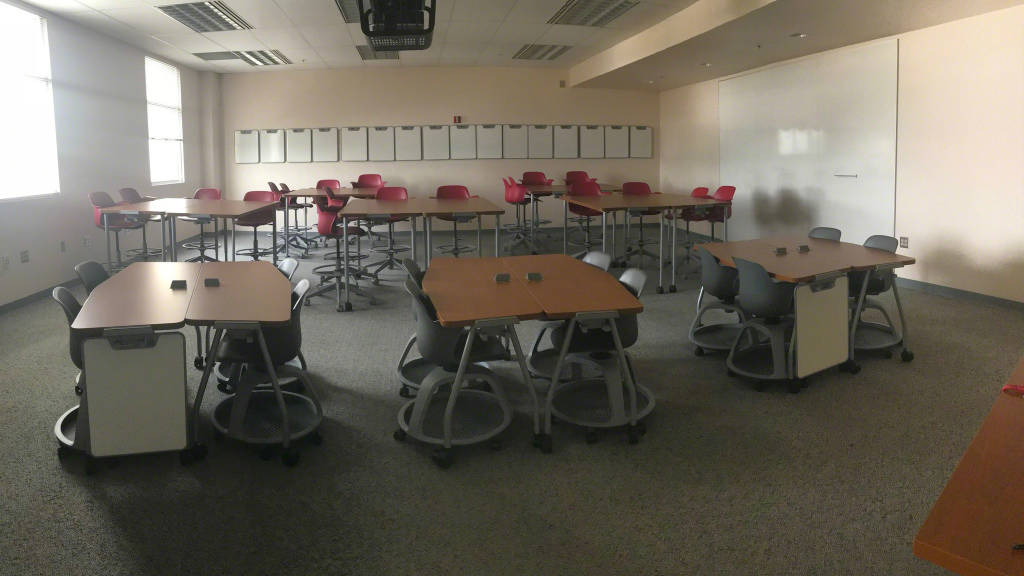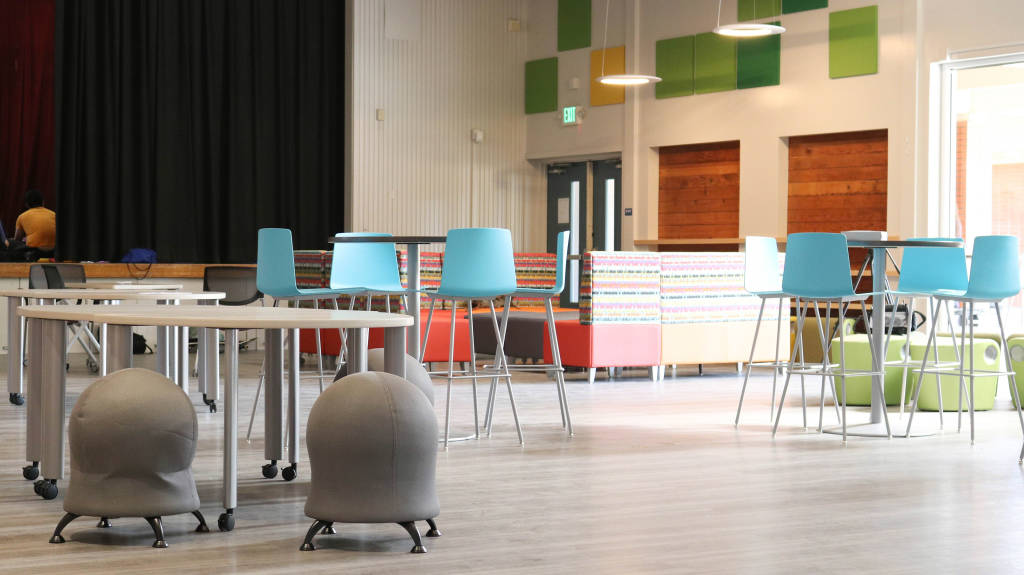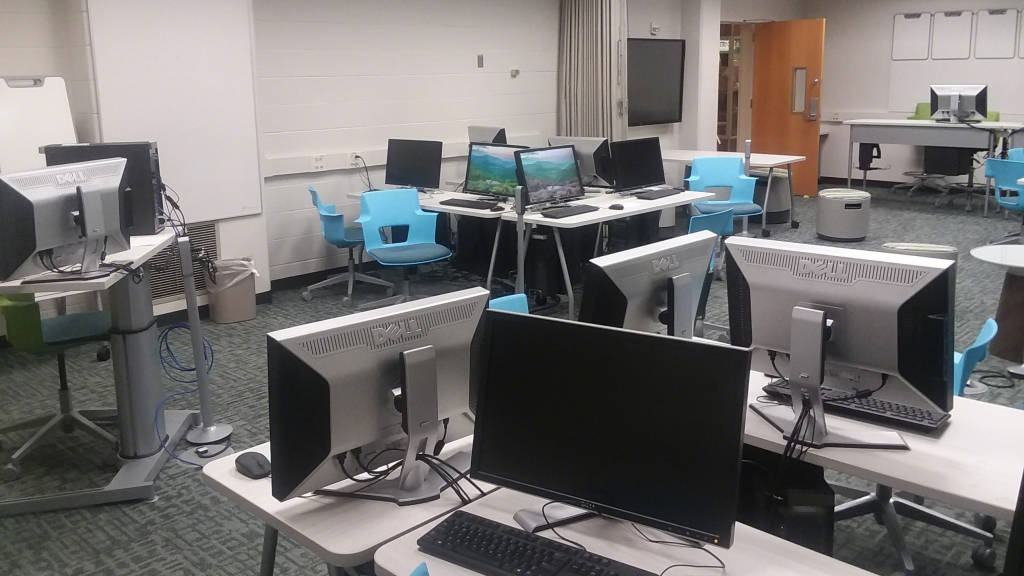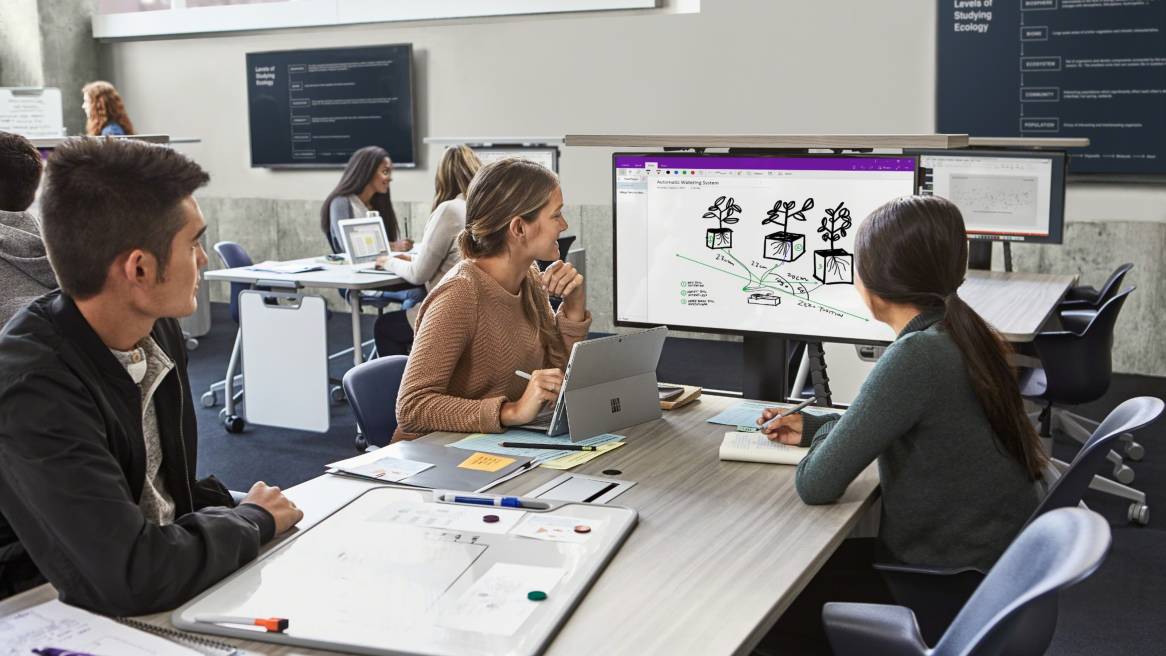Classroom Revamp
How four Active Learning Center Grant recipients are transforming their space for the new school year.
It’s time to shake off everything you think you know about school, and imagine a world where teachers swap long lectures and quiet classrooms for exciting discussions and hands-on group activities — where students are encouraged to collaborate, problem solve and discover for themselves.
This is the world of active learning, a student-centered approach that’s being embraced by many innovative educators, including the 16 winners of the 2018 Steelcase Education Active Learning Center Grant. Through group activities and interaction, these educators are hoping their students glean important skills that help them in school and after graduation. One study showed that active learning practices improve student engagement and increase performance in science, engineering and mathematics.
However, for many of these forward-thinking educators, their classroom can’t keep up with their students — large, clunky furniture and outdated technology make it difficult to jump from group to group throughout the day. So, Steelcase Education established the Active Learning Center Grant as a way to help these institutions create effective, inspiring learning environments with the right furniture, tools and technology. In part, these classrooms include movable, flexible furniture, easy ways for students to display information and participate in class discussions, and access to power anywhere students decide to work. Each year, up to 16 schools receive the furniture needed to create an Active Learning Center, which also includes onsite training and installation.
In turn, each school will share their performance measurements, partnering with Steelcase Education to share what works with other educators and help inform future solutions that support students’ needs as they step out of their comfort zone and into an active learning classroom.
With the school year in full swing, 360 checked in with four recipients to see how they’re hoping their new Active Learning Centers will impact students this year.
New Mexico State University | Las Cruces, NM

As Elizabeth Howard, program manager of student affairs for the College of Engineering at New Mexico State University, set out to increase retention among minority students, she decided to focus her efforts on Hispanic women, since a large number of the students are Hispanic, and women in the engineering program are a minority. This is what focused her sights on Engineering 100, the introductory class every freshman is required to take.
Having recently revamped the course to include more teamwork and group design challenges, Howard’s team decided to turn one of the outdated classrooms into the Active Learning Center, to see if the new environment would help students embrace a more collaborative learning style.
“Engineering is such a challenging curriculum,” says Howard. “So the opportunity to work in a classroom where we can really utilize team relationships will allow students to rely on their peers and they’ll just be that much more successful.”
At the end of the year, Howard’s team plans to conduct focus groups with Hispanic female students who took Engineering 100 in the Active Learning Center and those who took the course in a traditional classroom, to see if retention increased.
“We’re hoping the Active Learning Classroom will promote their persistence,” she says. “So far, the feedback has been really, really positive.”
UnSchool | Fair Oaks, CA

When the UnSchool opened in 2017, the staff hoped the large, open space would offer a new approach to education for freshmen and sophomore students who struggled in a traditional classroom setting. Students were encouraged to work at their own pace, explore personal passions and interact with their peers.
“UnSchool was designed in a space that’s open and flexible,” says Gabriel Cooper, principal. “We wanted to be able to create seminars, deep dives and crash courses for students to be able to experience different learning opportunities.”
However, it quickly became clear that the students were being weighed down by the large, cumbersome furniture, opting to stay in the same place most of the day instead of moving from group to group as they took on projects. By turning the big, open room into an Active Learning Center, the staff was able to remove uncomfortable, stiff furniture and create a space that offered endless configurations to accommodate organic collaboration and peer-to-peer interaction.
“I’m hoping this will encourage them,” Cooper says. “If some students are working on rockets and I’m working on my rocket, ideally we’d move the furniture together to become a larger, more fluid group. The kids are super excited.”
Arapahoe Ridge High School | Boulder, CO
Many students come to Arapahoe Ridge, an alternative high school, feeling like traditional high schools were not the right fit for them. And, because of their struggles at a conventional school, these kids are at a high risk of dropping out.
“They just want to focus on the basics and get out,” says Dr. Jill Williams, a teacher at ARHS.
In an effort to change that mindset, Arapahoe chose to transform the library into their Active Learning Center. The unused space, filled with lonely books and floor-to-ceiling windows that overlook the Rocky Mountains, felt like the perfect location to inspire students and embolden them to take greater academic risks, and dive into deeper learning. In addition, 80 percent of the students are also learning to speak English, so more face-to-face, peer-to-peer interaction may help strengthen their language skills.
So, what does success look like to the staff at Arapahoe?
“Very loud and messy,” says Williams. She hopes to see the room full of excited students talking, working together and actually enjoying their education.
Virginia Tech | Blacksburg, VA

When the computer lab in 217 Cheatham Hall was built 20 years ago as the home to the Center for Environmental Applications of Remote Sensing (CEARS), it was designed as a space for instruction and collaborative research using remote sensors, such as cameras and accelerometers, to learn more about human-building dynamics.
But, assistant professor Timothy Baird’s team began to notice that, while the school’s technology and curriculum were constantly evolving, their classroom was not. So, with the help of the Active Learning Center Grant, they were able to reboot the computer lab into a living laboratory that will not only advance their research plans, but promote the student engagement and hands-on group work their curriculum now requires.
“We know that students can learn more and be more creative when they’re actively engaged in the course and work collaboratively in groups,” explains Baird. “We’ve designed an active learning computer lab that promotes collaboration and creativity to set our students up for success.”
By comparing qualitative and quantitative social data, based on student and instructor feedback and sensor tracking, Baird’s team hopes to learn more about human movement and behavior in the Active Learning Center compared to the traditional computer lab across the hall, to see which environment is more conducive to modern-day learning.
360 will share each school’s results at the conclusion of the school year. For research from 12 Active Learning Center Grant schools, read Active Learning Centers Impact Education.
Interested in the Active Learning Center Grant?
Browse resources, sign up for updates, and learn more about the program’s fifth cycle which opens on December 3, 2018.


